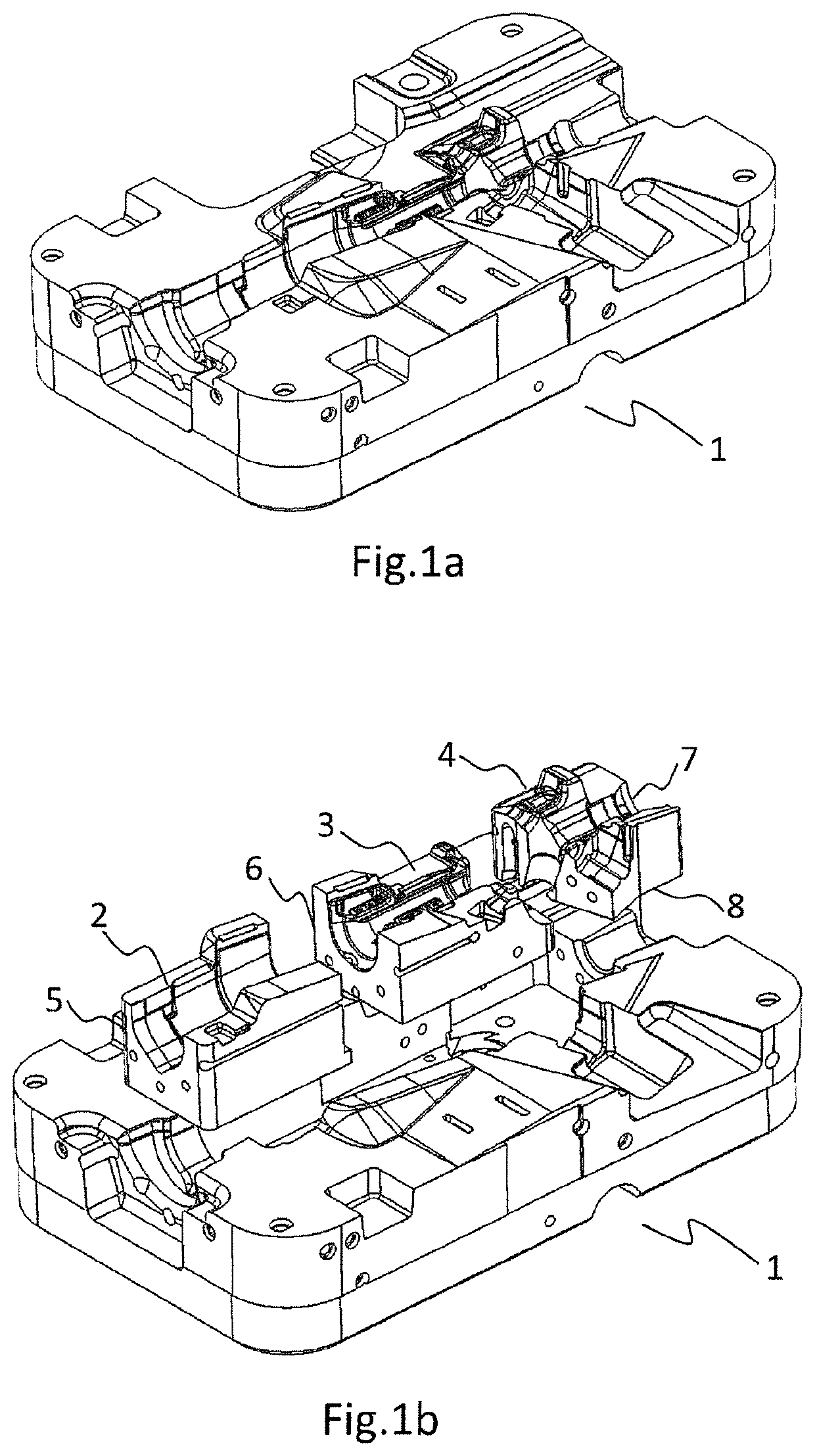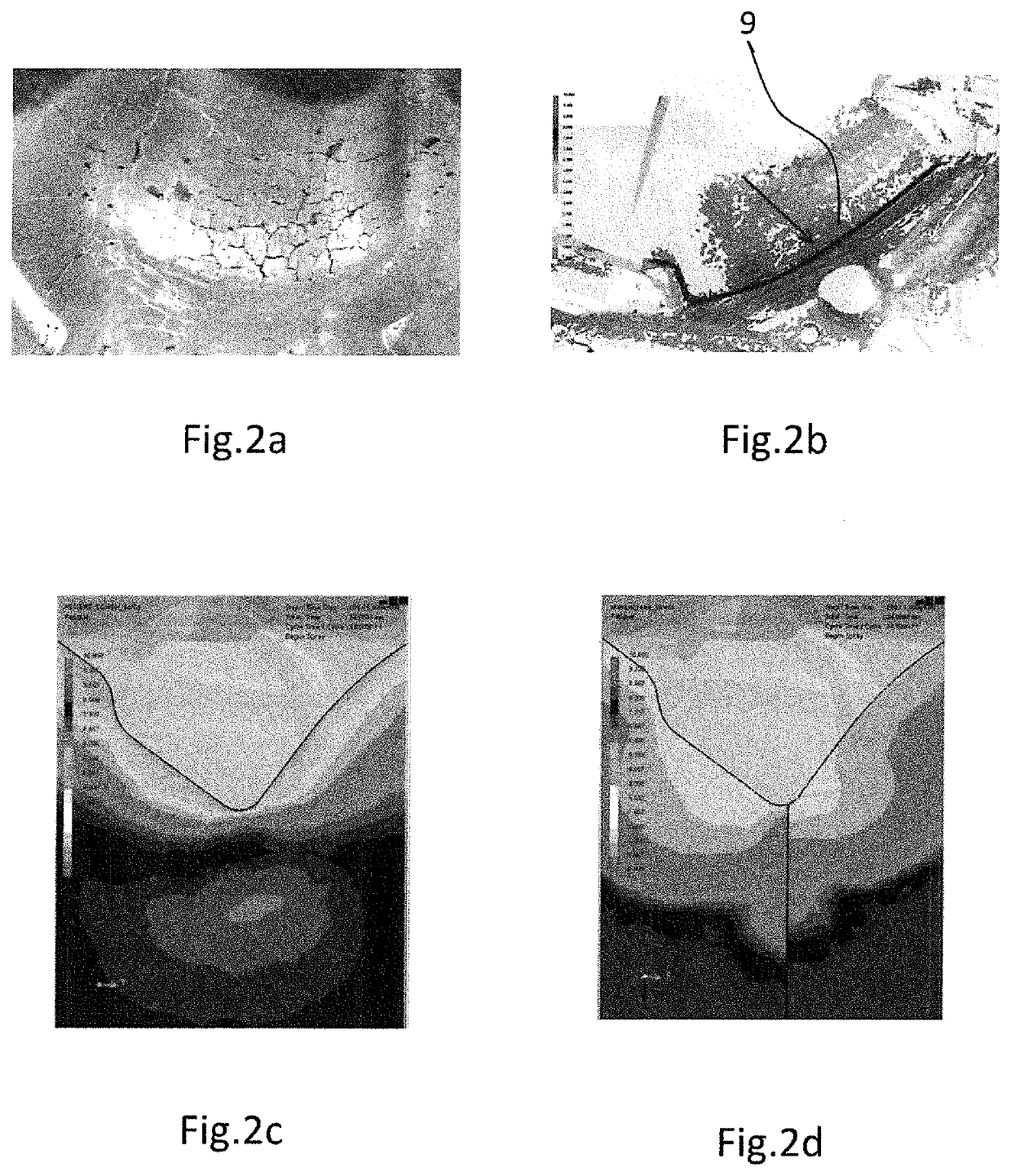Method for designing dies for die casting and die
a die casting and die casting technology, applied in the field of die casting die design and die, can solve the problems of further increase in costs and thermal mechanical performances, and achieve the effects of high thermal mechanical performance, high fatigue resistance, and high mechanical and thermal strength
- Summary
- Abstract
- Description
- Claims
- Application Information
AI Technical Summary
Benefits of technology
Problems solved by technology
Method used
Image
Examples
example
[0075]The example described here relates to a simulation performed on a die for die casting of a steering house. This die was used really as a whole die. It has a theoretical useful life cycle which on average is equal to 150,000 cycles of die casting and, in the specific case, has begun to show signs of deterioration through fatigue (FIG. 2a) after approximately 12,000 cycles of die casting.
[0076]The simulation was performed in the following way:[0077]the geometry of the whole die and of the heat-regulation channels present inside the die were modelled;[0078]the two-dimensional meshes for the discretisation of the surface of the die were defined;[0079]after appropriate refining of the two-dimensional meshes at the zones of contact between die and metal used for the die casting, the volume of the die and of the heat-regulation channels was discretised, by means of three-dimensional meshes;[0080]the materials which constitute the die and the materials of the parts to be made by means...
PUM
| Property | Measurement | Unit |
|---|---|---|
| thermo mechanical behaviour | aaaaa | aaaaa |
| thermo mechanical | aaaaa | aaaaa |
| mechanical fatigue | aaaaa | aaaaa |
Abstract
Description
Claims
Application Information
 Login to View More
Login to View More - R&D
- Intellectual Property
- Life Sciences
- Materials
- Tech Scout
- Unparalleled Data Quality
- Higher Quality Content
- 60% Fewer Hallucinations
Browse by: Latest US Patents, China's latest patents, Technical Efficacy Thesaurus, Application Domain, Technology Topic, Popular Technical Reports.
© 2025 PatSnap. All rights reserved.Legal|Privacy policy|Modern Slavery Act Transparency Statement|Sitemap|About US| Contact US: help@patsnap.com


